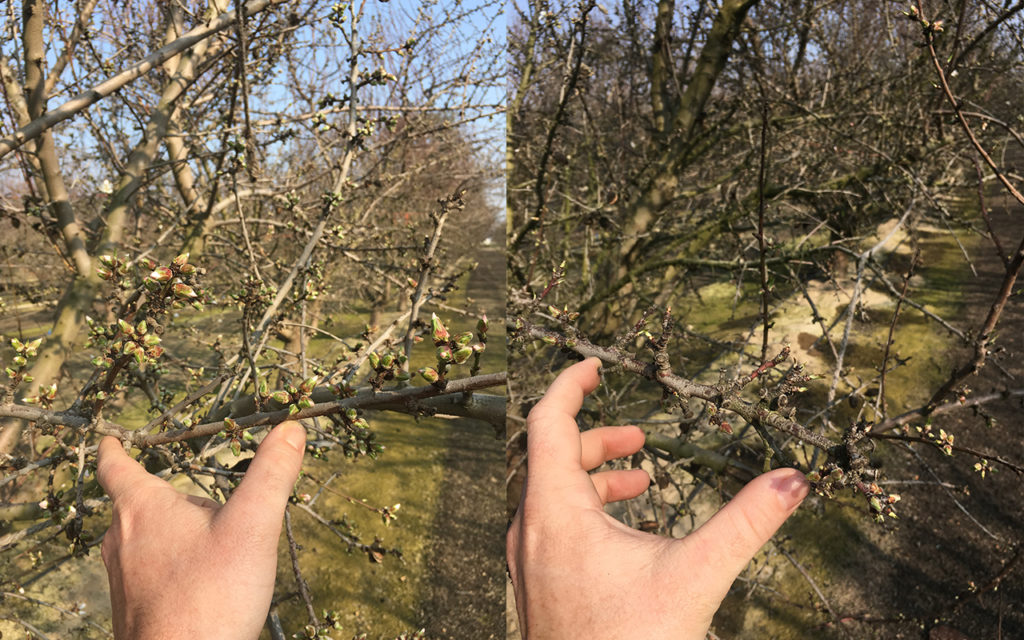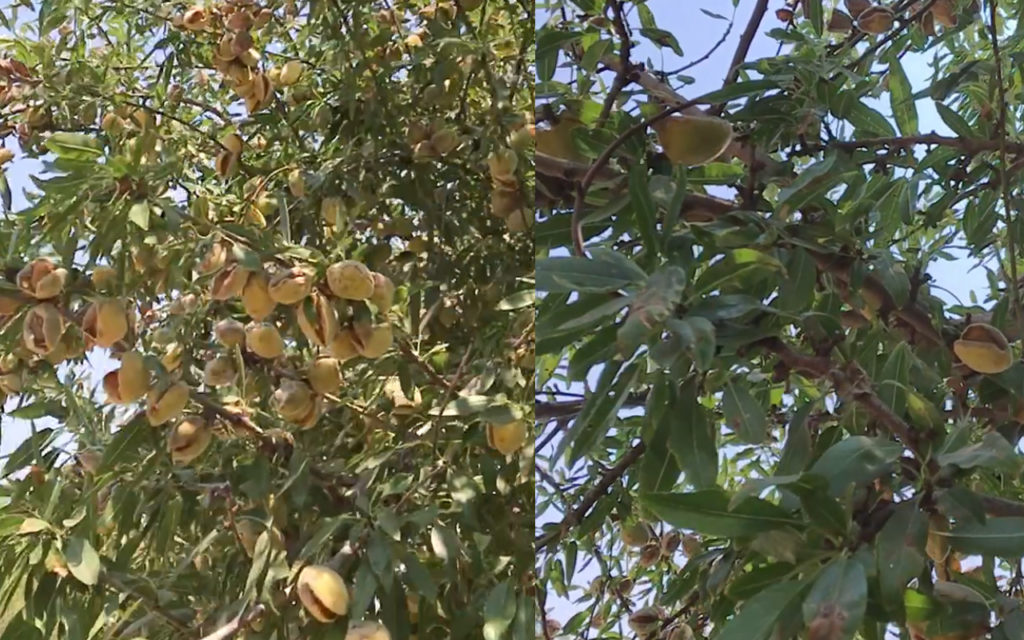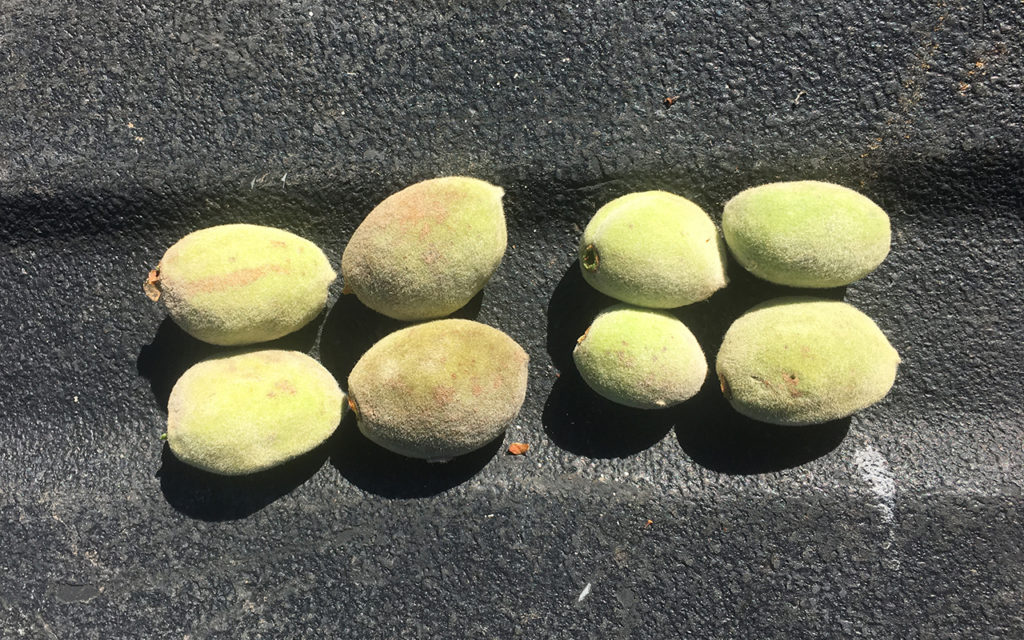Jeff Merritt thought he was going to be a doctor.
Growing up in an agriculture family that grew peaches, nectarines, plums, and pluots, Merritt’s grandfather had roughly 1,600 acres of stone fruit, with the farm having its own packing shed and sales agency.
After two bad years, it was all but gone.
Highly leveraged and then used to pay off debts, the family was able to keep about 100 acres around the home. Fresh out of high school, Merritt was told there was not much left for him to be a part of, and to pursue a career in something other than agriculture.
So, off he went of Fresno Pacific University, where he studied biology and chemistry with the intention of heading to medical school after graduation.
“But then I didn’t see the financial benefits of that until I was fifty years old or so,” says Merritt about medical school. “So I thought, No, let’s try something a little bit easier.”
After graduation, Merritt nixed med school and instead worked at a hospital for a year as a lab scientist, but found himself very unhappy. “I couldn’t handle showing up to the hospital at six a.m. when it was dark, sitting in a basement all day running lab tests, and then coming out at six p.m. when it was dark, and never seeing the sun.”

It was then that Merritt returned to his roots in agriculture and found himself working as an agriculture inspector for the Tulare County Agricultural Commissioner’s Office, checking stone fruit and helping to write policies on different export programs.
After his time with the Ag commissioner, Merritt became a part of a new biological company that was trying to get a foothold in California at the time. While at this company, Merritt did very well in sales, moved up the corporate ladder, became the vice president of sales, and managed a team of fifteen sales managers from the Rocky Mountains west. But, in his climb to the top, Merritt was finally able to see how much it cost to manufacture the product he was selling, where it was being manufactured, and what the company was charging growers.
“I was appalled,” says Merritt. “Several of the products had over a one thousand percent markup on them. That led me to want to do my own, knowing I could provide at least as good of a product— if not a better one— for a significantly lower price to growers.”
Merritt brought his business concerns— and objections— to the decision makers at the company. “I was told to shut up and do my job,” he says.
It was his repeated disappointment with what went on behind the curtains at large fertilizer houses that Merritt had to make his final decision about where he stood in the corporate side of agriculture.
Ultimately, Merritt walked away. A lot of his customers followed him, and he decided to build a new product line.
With incredible mentorships in agronomics and his educational background in the sciences, Merritt was able to build a new business, Axiom Ag, and formulate products that not only put nutrients into the soil, but deliver nutrients to the plant in the form that it actually wants and can use.
“You can do all the research you want, and you can deliver nutrients in a way the soil wants, but if the tree can’t move it to produce, now you have an issue. You can have a tree that looks good, but has tiny fruit, or fruit that just has water and lacks flavor,” says Merritt.

Merritt’s focus is precision plant nutrition. When the plant needs something, it needs to receive what it wants, when it wants it. A lot of the chemistry that happens in this scenario is through a biological fermentation. Instead of waiting for the soil to break down nutrition, Axiom provides a way where that step is already done, and the nutrients are available to the plant immediately.
Merritt has two trials blocks, one on each side of Fresno County. One is 40 acres of kiwis, the other 120 acres of almonds. Both of these blocks were losing either their trees or vines to phytophthora— a water mold that happens in water-logged soils, and that damages ecosystems and can have devastating effects on crops. The year before Merritt started the trial, the kiwi growers had lost 20% of their vines to phytophthora. The almond growers had lost just over 10% of the trees to the mold.
“Many things that help the plant grow are deterrents or in competition with things that break down the plant or kill the plant,” explains Merritt.
In order to remedy this, there are three points that Axiom products must hit. The first is to open up the soil to increase water infiltration so that a field doesn’t have standing water, but still has good water holding capacity. The second is to introduce the proper biology that competes with the phytophthora fungus. And the third is to provide an increase in carbon dioxide production that is antagonistic to phytophthora growth.
Fast forward one year after the start of the trial, and both the growers and Merritt are more than pleased with the results— only three kiwi vines needed to be replaced, and not a single almond tree was lost. Due to the three lost vines, there was some aborted kiwi fruit. The second year, there was no dropped kiwi due to phytophthora. Over the course of those same two years, the almond yield increased over 180 pounds per acre.
“And that was just through biology,” says Merritt, proudly. “Not through any other chemical nutrition.”
Not only that, but both growers have seen a 25% reduction in their pesticide bills due to the need of fewer inputs.
One of the principles Merritt uses is that over-nitrified growth is actually weak growth, which makes a plant highly susceptible to pest pressures. But, if that abundance of nitrogen is converted to a protein within the plant, then pests cannot digest it, resulting in a healthy plant that contains plenty of nitrogen, but in a protein form as opposed to a nitrate form.
“We’re making the tree so healthy that most insect pests are not attracted to it,” says Merritt.
One step further is using biology to open up the phloem transport of the plant through different triggers in the soil, making the above process faster and more efficient.

It has been three years since Axiom Ag entered the scene. And while Merritt will be the first person to admit there is no silver bullet in agriculture that will magically fix anything, the right products used in proper conjunction with one another can produce improved results. The company has 20,000 acres in California— from lettuce to blueberries and pistachios, to cherries, citrus, kiwis, almonds, and more— using its products in one form or another.
“Depending on whose realm we’re in, I’m either doing really well, or I’m still really small,” laughs Merritt.
That three-year milestone also marks the company’s first full crop cycle.
“Whenever you have problems, especially in permanent planting, the first year is dedicated to fixing the soil. The next year is the roots, and the following year is fixing the tree,” says Merritt.
“Whenever you’re fixing an issue in a permanent field, it usually takes three years to see the effects of what you’re doing. It’s been exciting to see the results come through; it’s been very favorable.”
In addition to growing his company and being a resource for growers, Merritt hopes to return to farming his own land as well.











